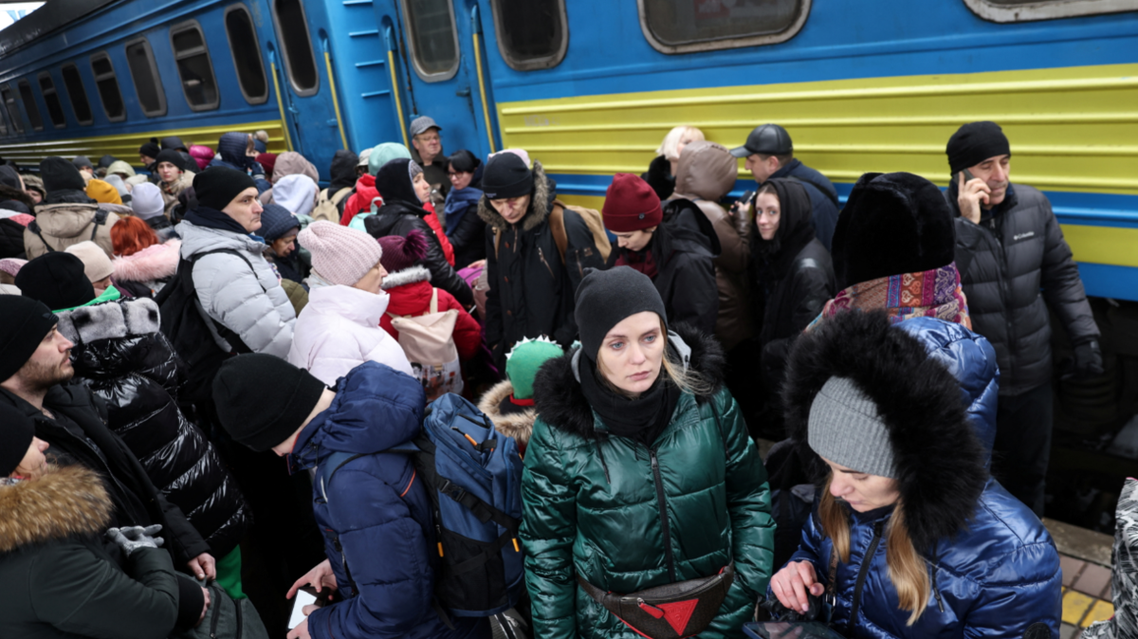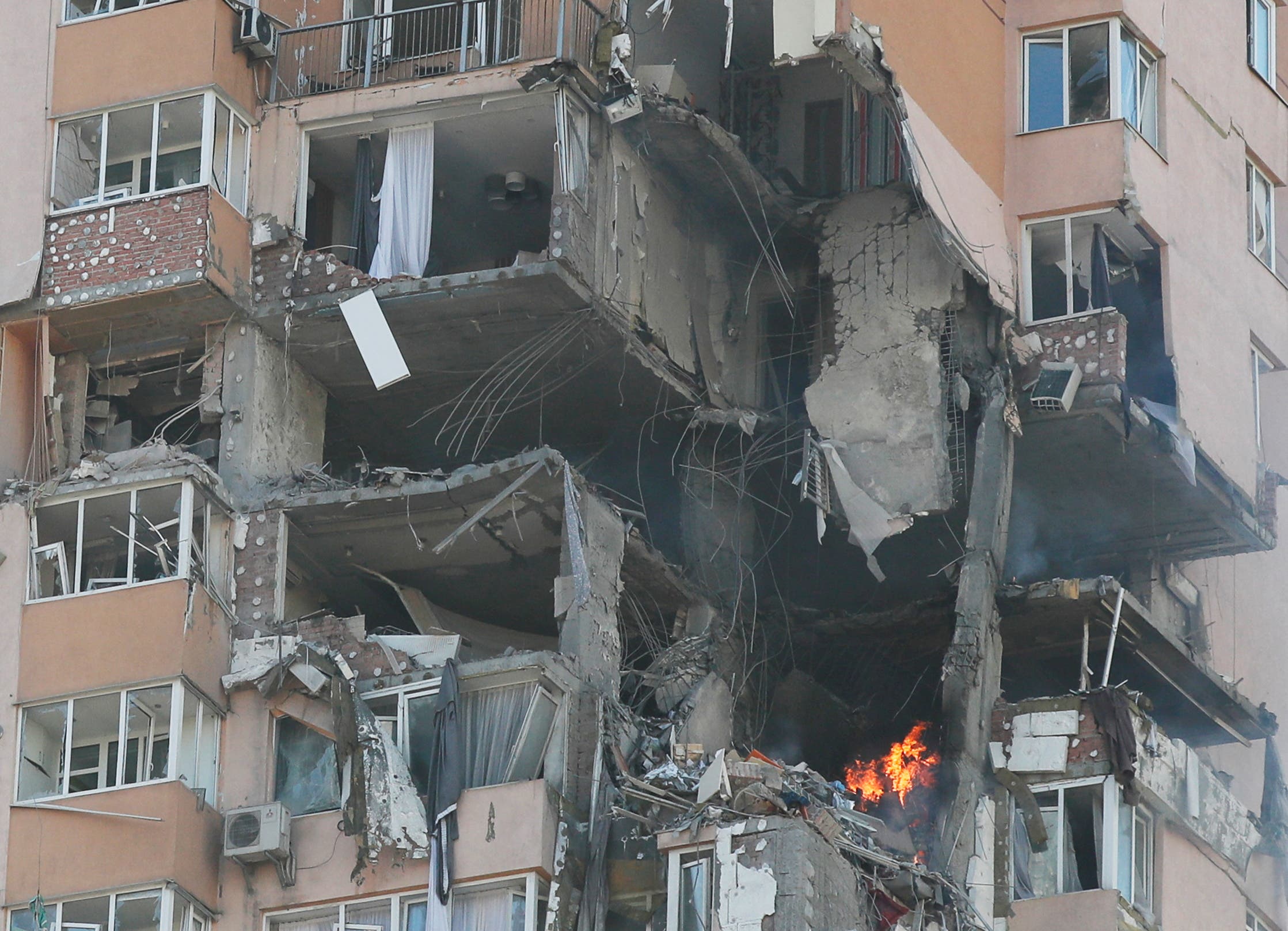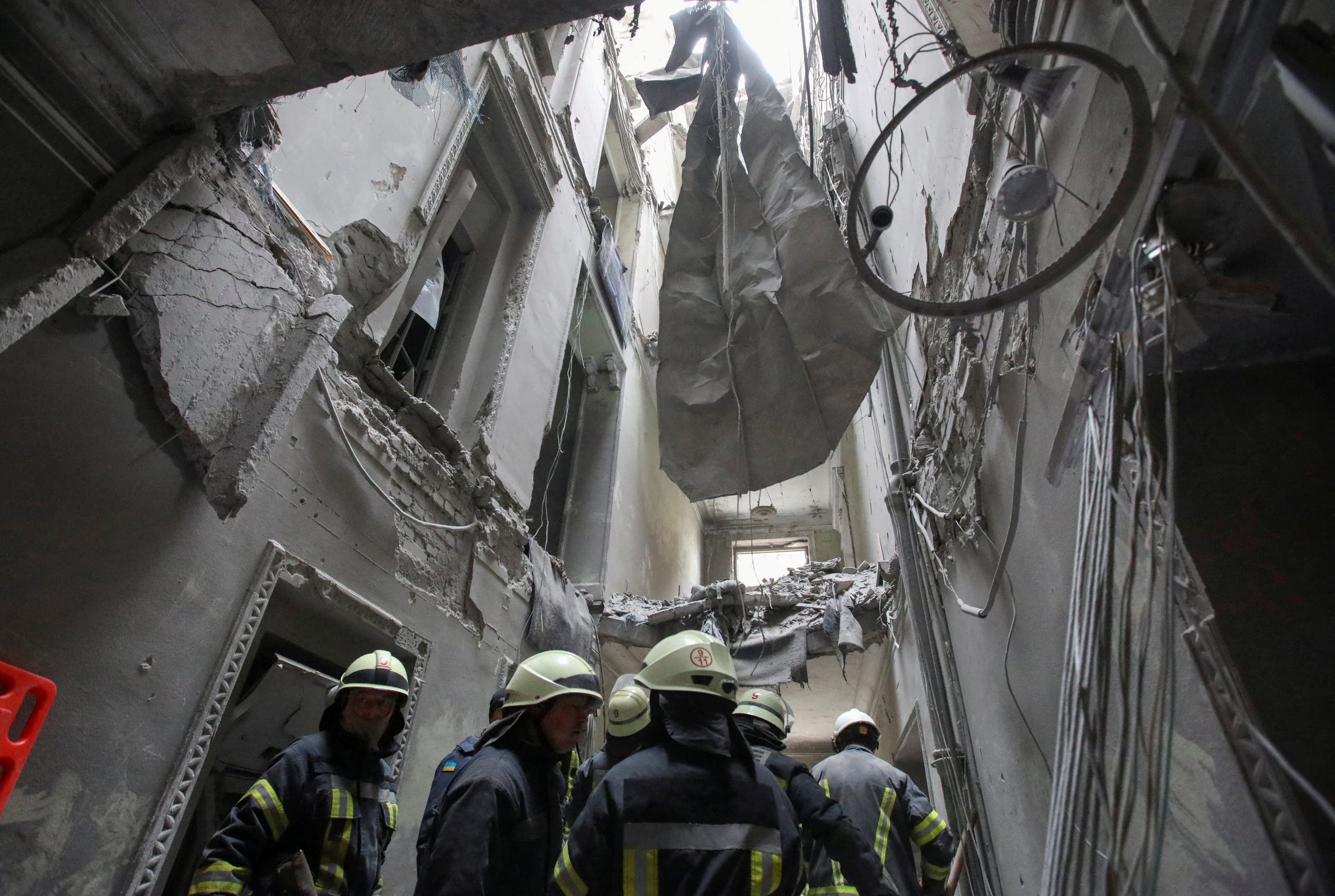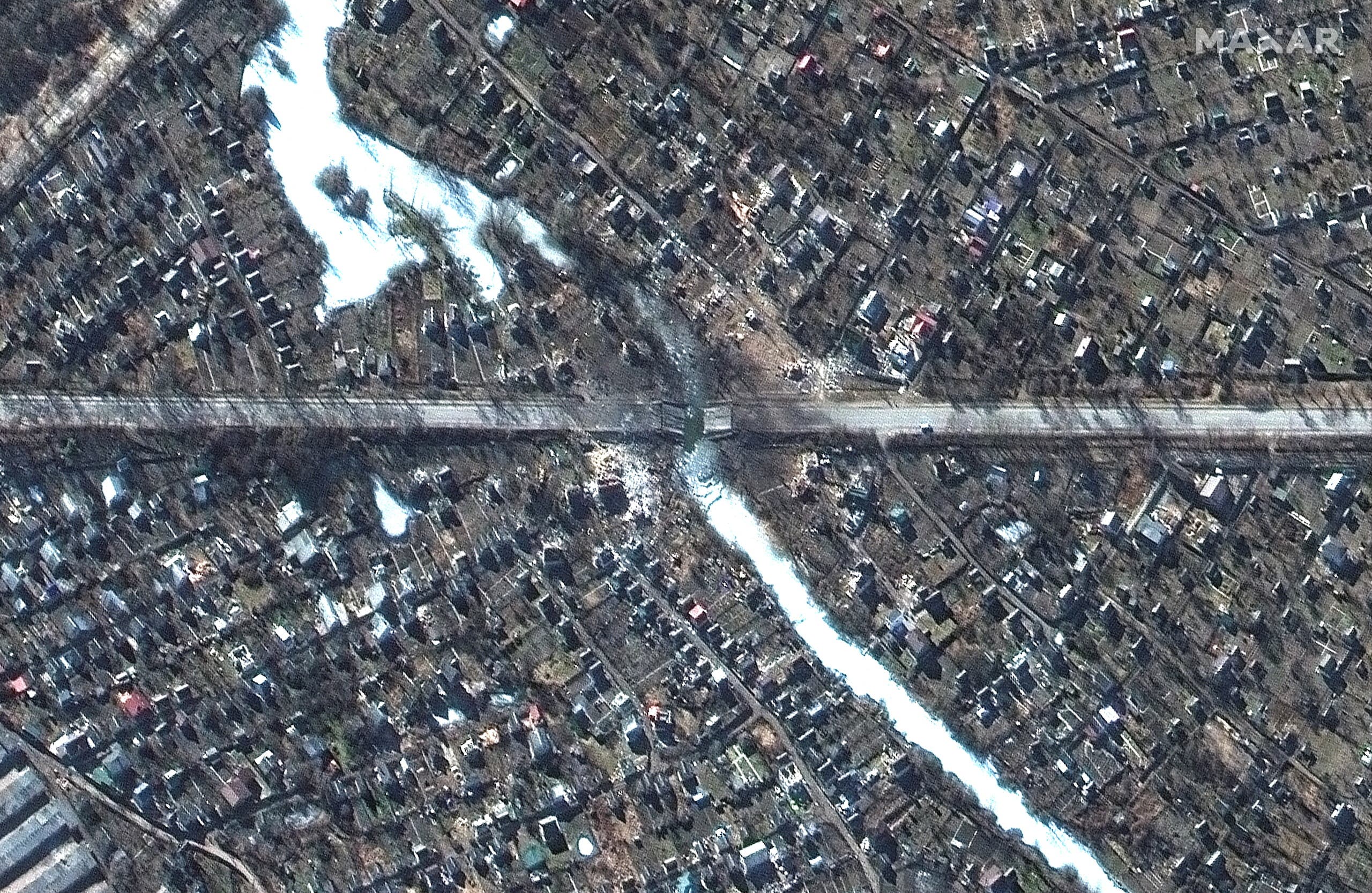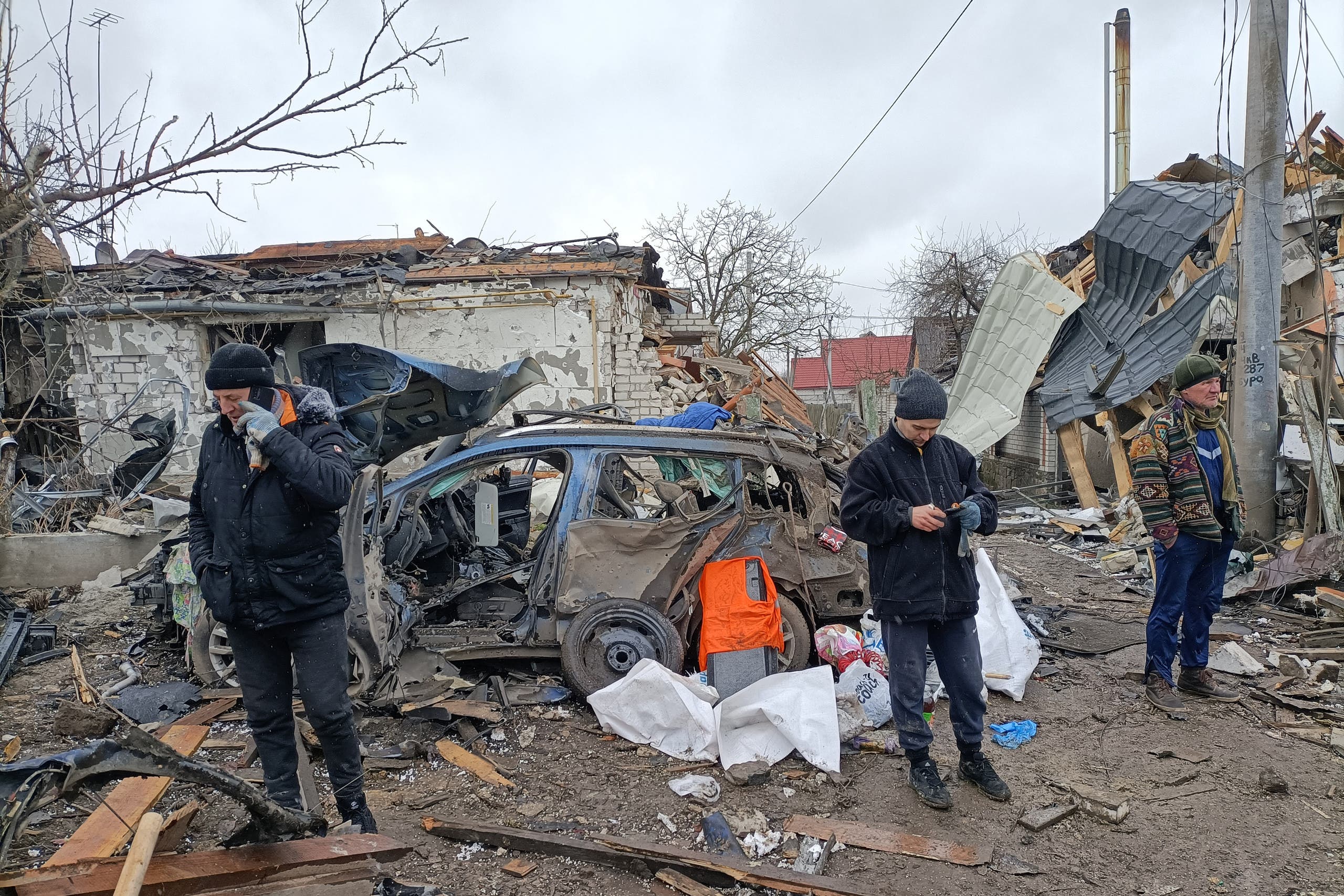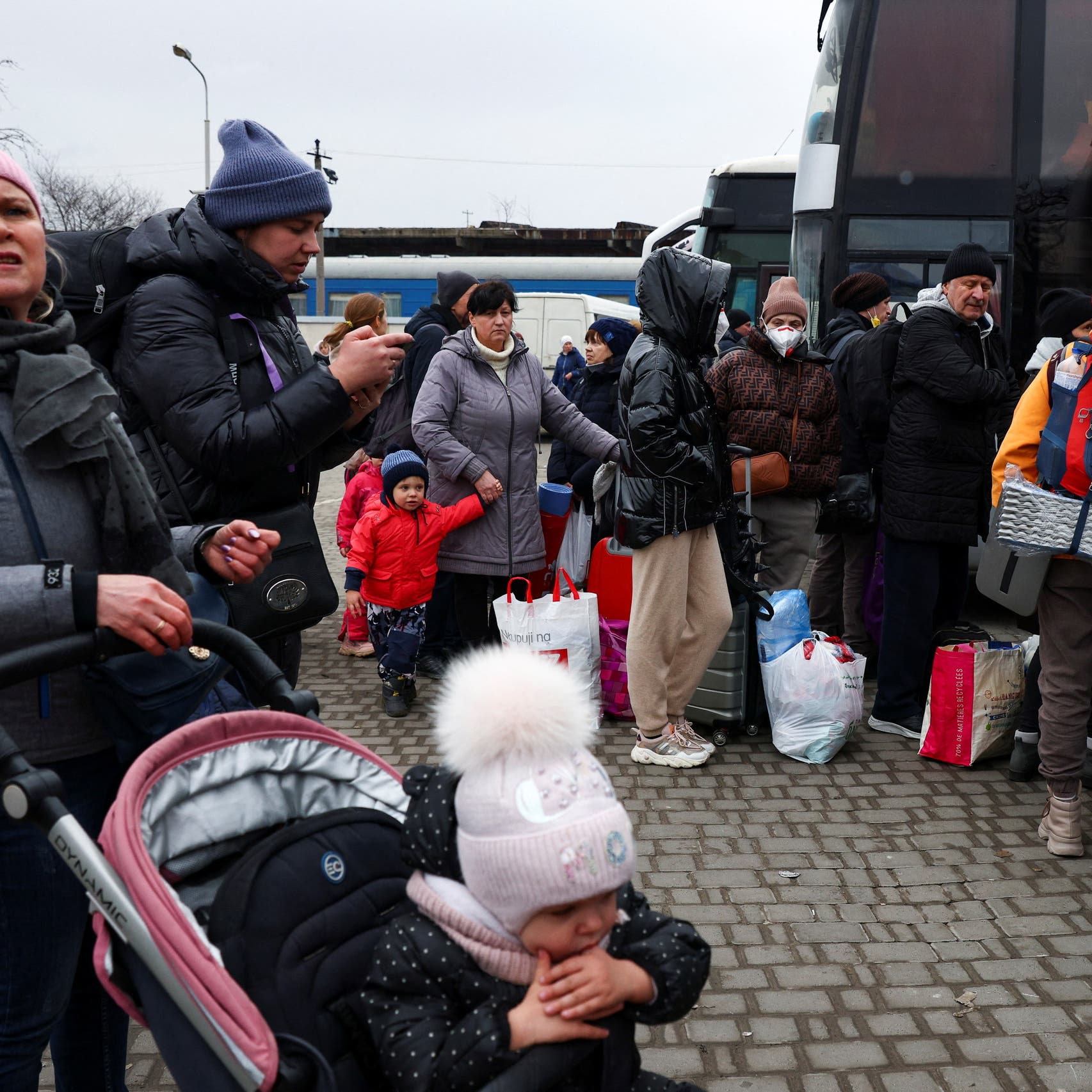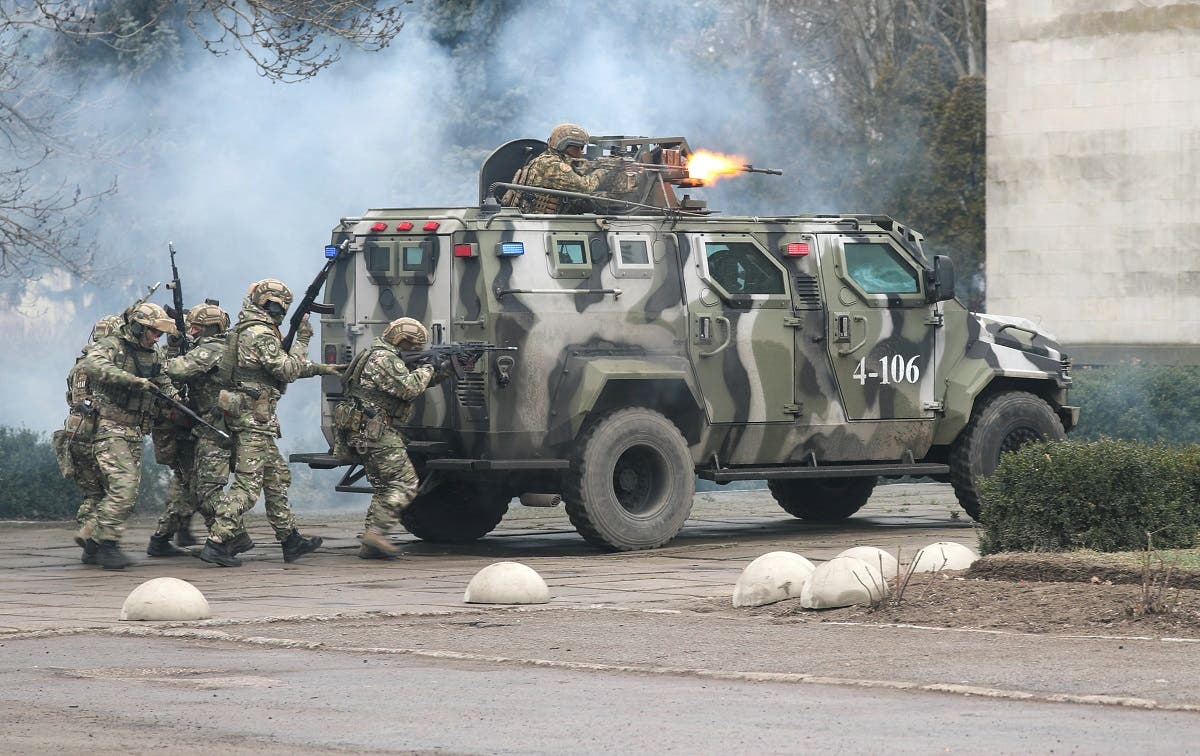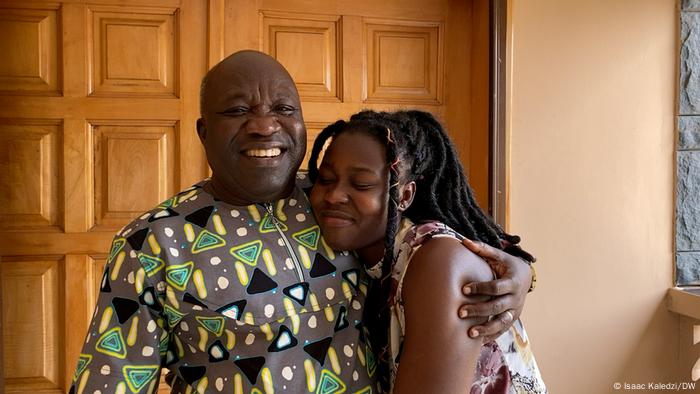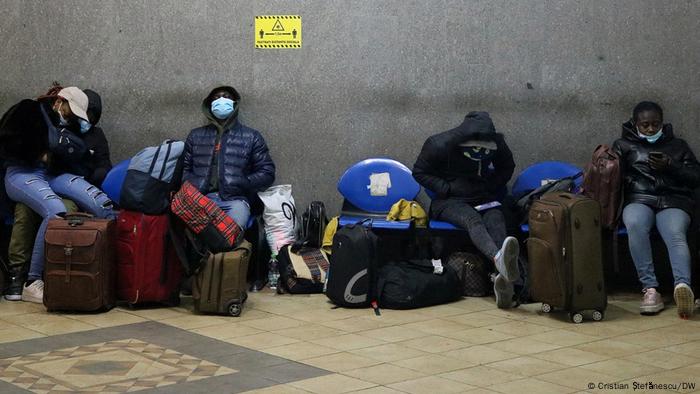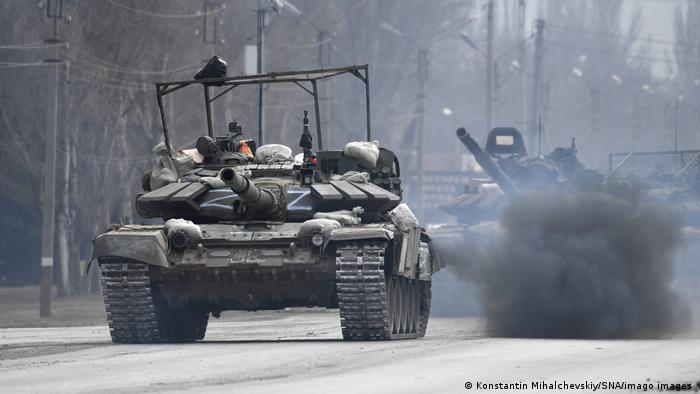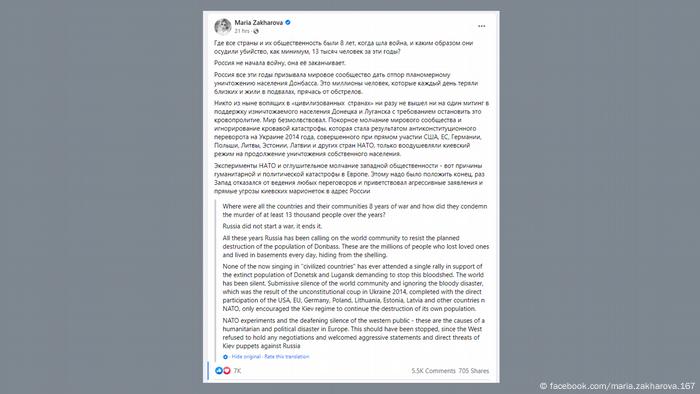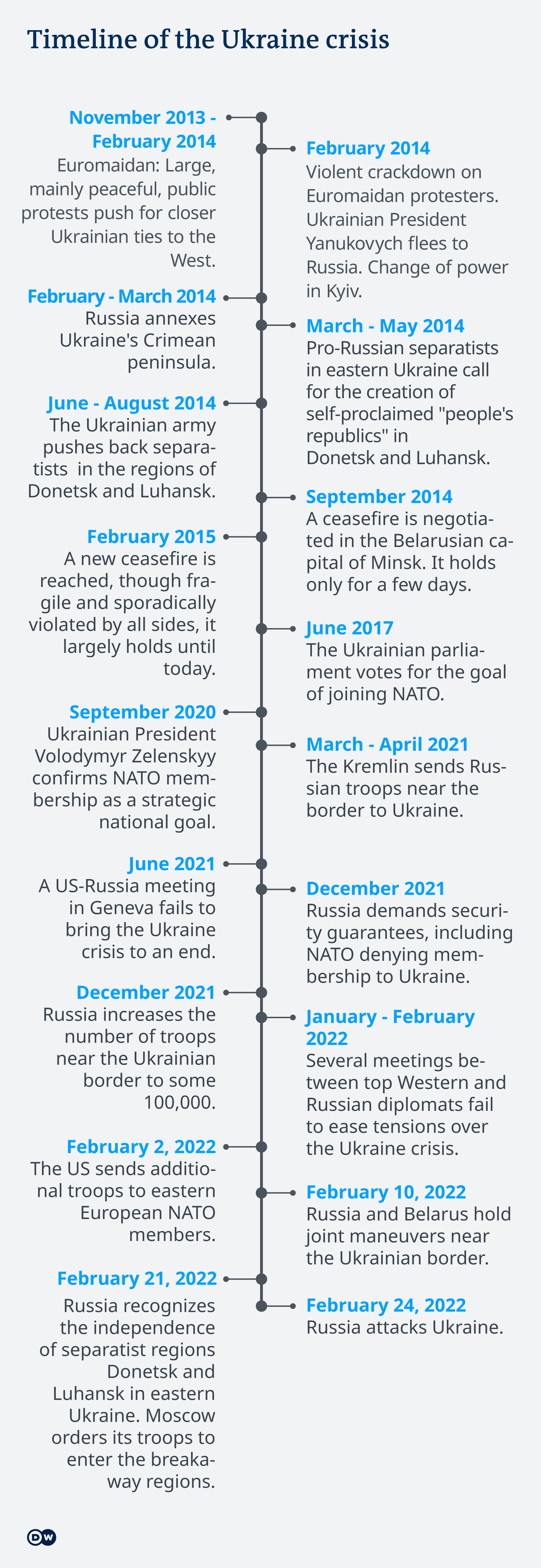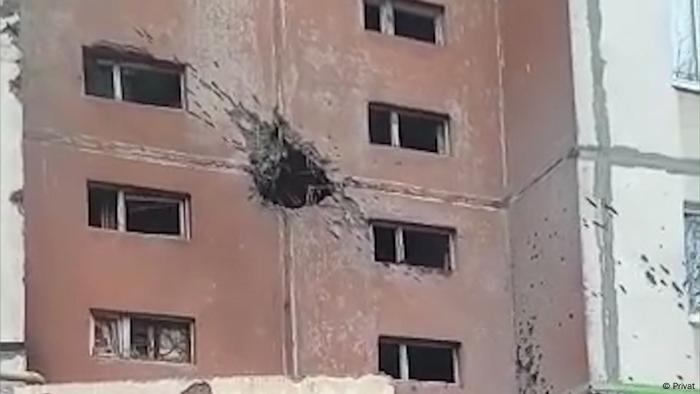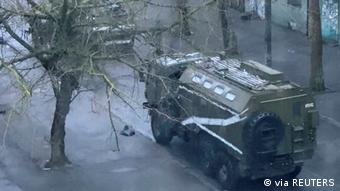Stuart A. Thompson and Davey Alba
Thu, March 3, 2022,

A quiet embankment along the Dnieper River in Kyiv, as Russia's invasion of Ukraine began on the morning of Thursday, Feb. 24, 2022. (Brendan Hoffman/The New York Times).
Just days into the Russian invasion of Ukraine, a pilot with a mysterious nickname was quickly becoming the conflict’s first wartime hero. Named the Ghost of Kyiv, the ace fighter had apparently single-handedly shot down several Russian fighter jets.
The story was shared by the official Ukraine Twitter account Feb. 27 in a thrilling montage video set to thumping music, showing the fighter swooping through the Ukrainian skies as enemy planes exploded around him. The Security Service of Ukraine, the country’s main security agency, also relayed the tale on its official Telegram channel, which has over 700,000 subscribers.
The story of a single pilot beating the superior Russian air force found wide appeal online, thanks to the official Ukraine accounts and many others. Videos of the so-called Ghost of Kyiv had more than 9.3 million views on Twitter, and the pilot was mentioned in thousands of Facebook groups reaching up to 717 million followers. On YouTube, videos promoting the Ukrainian fighter collected 6.5 million views, while TikTok videos with the hashtag #ghostofkyiv reached 200 million views.
There was just one problem: The Ghost of Kyiv may be a myth.
While there are reports of some Russian planes getting destroyed in combat, there is no information linking them to a single Ukrainian pilot. One of the first videos that went viral, which was included in the montage shared by the official Ukraine Twitter account, was actually a computer rendering from a combat flight simulator originally uploaded by a YouTube user with just 3,000 subscribers. And a photo supposedly confirming the fighter’s existence, shared by a former president of Ukraine, Petro Poroshenko, was from a 2019 Twitter post by the Ukrainian defense ministry.
IT'S BEEN DONE BEFORE
During the summer of 1914 in a crucial battle in Mons Belgium British troops claimed to have seen St. George and a group of Longbowmen in the skies, which they claimed to have turned the battle in their favour.
This is known as the Legend of Mons, and occult horror author Arthur Machen claimed at the time that it was based on his short story called the Bowman which had been published in the popular press of the day. However historian A.J.P Taylor believed the story and recorded it in his history of WWI.
The fact that the tale and trench rumours of Angels of Mons appeared the summer before may have had a subconcious effect on the soldiers in the trenches facing the first industrialized war of mass murder.
LA REVUE GAUCHE - Left Comment: WWI Xmas Mutiny (plawiuk.blogspot.com)
When fact-checking website Snopes published an article debunking the video, some social media users pushed back.
“Why can’t we just let people believe some things?” one Twitter user replied. “If the Russians believe it, it brings fear. If the Ukrainians believe it, it gives them hope.”
In the information war over the invasion of Ukraine, some of the country’s official accounts have pushed stories with questionable veracity, spreading anecdotes, gripping on-the-ground accounts and even some unverified information that was later proved false, in a rapid jumble of fact and myth.
The claims by Ukraine do not compare to the falsehoods being spread by Russia, like laying the groundwork for a “false flag” operation in the lead-up to the invasion, which the Biden administration sought to derail. As the invasion neared, Russia falsely claimed that it was responding to Ukrainian aggression and liberating citizens from fascists and neo-Nazis. And since the assault began, Russia made baseless claims that Ukrainians had indiscriminately bombed hospitals and killed civilians.
Instead, Ukraine’s online propaganda is largely focused on its heroes and martyrs, characters that help dramatize tales of Ukrainian fortitude and Russian aggression.
But the Ukrainian claims on social media have also raised thorny questions about how false and unproven content should be handled during war — when lives are at stake and a Western ally is fighting for its survival against a powerful invading force.
“Ukraine is involved in pretty classic propaganda,” said Laura Edelson, a computer scientist studying misinformation at New York University. “They are telling stories that support their narrative. Sometimes false information is making its way in there, too, and more of it is getting through because of the overall environment.”
Anecdotes detailing Ukrainian bravery or Russian brutality are crucial to the country’s war plan, according to experts, and they are part of established war doctrine that values winning not just individual skirmishes but also the hearts and minds of citizens and international observers.
That is especially important during this conflict, as Ukrainians try to keep morale high among the fighters and marshal global support for their cause.
“If Ukraine had no messages of the righteousness of its cause, the popularity of its cause, the valor of its heroes, the suffering of its populace, then it would lose,” said Peter W. Singer, a strategist and senior fellow at New America, a think tank in Washington. “Not just the information war, but it would lose the overall war.”
In previous wars, combatants would try to sabotage enemy communication and limit the spread of wartime propaganda, even cutting physical communication lines like telegraph cables. But there are fewer such cables in the internet age, so in addition to downing communication towers and disrupting pockets of internet access, the modern strategy also involves flooding the internet with viral messages that drown out opposing narratives.
That digital battle moved at startling speed, experts noted, using an array of social media accounts, official websites and news conferences streamed online to spread Ukraine’s message.
“You have to have the message that goes the most viral,” Singer said.
That was the case with another report from Ukraine involving a remarkable confrontation on Snake Island, an outpost in the Black Sea. According to an audio recording released by Pravda, a Ukrainian newspaper, and later verified by Ukraine officials, 13 border guards were offered a frightening ultimatum by an advancing Russian military unit: surrender or face an attack. The Ukrainians responded instead with an expletive, before apparently being killed.
Audio of the exchange went viral on social media, and the clip posted Feb. 24 by Pravda received more than 3.5 million views on YouTube. President Volodymyr Zelenskyy of Ukraine personally announced the deaths in a video, saying they would each be awarded the title Hero of Ukraine.
But just days later, Ukrainian officials confirmed in a Facebook post that the men were still alive, taken prisoner by Russian forces.
Social media has become the main conduit for pushing the information, verified or not, giving tech companies a role in the information war too. The fake Ghost of Kyiv video, for instance, was flagged as “out of context” by Twitter, but the montage posted to Ukraine’s official Twitter account received no such flag. The false photo posted by Poroshenko, the former Ukrainian president, also had no flag.
While Twitter monitors its service for harmful content, including manipulated or mislabeled videos, it said that tweets simply mentioning the Ghost of Kyiv do not violate its rules.
“When we identify content and accounts that violate the Twitter Rules, we’ll take enforcement action,” the company said.
In exercising discretion over how unverified or false content is moderated, social media companies have decided to “pick a side,” according to Alex Stamos, director of the Stanford Internet Observatory and a former head of security at Facebook.
“I think this demonstrates the limits of ‘fact-checking’ in a fast-moving battle with real lives at stake,” Stamos said. He added that technology platforms never created rules against misinformation overall, instead targeting specific behaviors, actors and content.
That leaves the truth behind some wartime narratives, like an apparent assassination plot against Zelenskyy or simply the number of troops killed in battle, fairly elusive, even as official accounts and news media share the information.
Those narratives have continued as the war marches on, revealing the contours of an information war aimed not just at Western audiences but also Russian citizens. At the United Nations on Monday, the Ukrainian ambassador, Sergiy Kyslytsya, shared a series of text messages that he said were retrieved from the phone of dead Russian soldier.
“Mama, I’m in Ukraine. There is a real war raging here. I’m afraid,” the Russian soldier apparently wrote, according to Kyslytsya’s account, which he read in Russian. The tale seemed to evoke a narrative advanced by officials and shared extensively on social media that Russian soldiers are poorly trained, too young and don’t want to be fighting their Ukrainian neighbors. “We are bombing all of the cities together, even targeting civilians.”
The story, whether true or not, appears tailor-made for Russian civilians — particularly parents fretting over the fate of their enlisted children, experts said.
“This is an age-old tactic that the Ukrainians are trying to use, and that is to draw the attention of the mothers and the families in Russia away from the more grandiose aims for war, onto, instead, the human costs of war,” said Ian Garner, a historian focusing on Russia who has followed Russian-language propaganda during the conflict. “We know that this is really effective.”
Official Ukrainian accounts have also uploaded dozens of videos purportedly showing Russian prisoners of war, some with bloody bandages covering their arms or face. In the videos, the prisoners are heard denouncing the invasion. The videos may raise questions about whether Ukraine is violating the Geneva Conventions, which has rules about sharing images of war prisoners.
Russia has also engaged in its own form of mythmaking, but experts say it has been far less effective. Rather than targeting international observers with emotional appeals, Russia has focused on swaying its own population to build support for the battle, according to Garner.
Since Russian state media is still calling the conflict a “special military operation” and not a war — in line with the description used by President Vladimir Putin of Russia — state broadcasters are left “trying to talk about a war that is apparently not happening,” Garner said.
The Russian government “can’t play to its strongest narratives of individual sacrifice,” he added, instead relying on stories of Ukrainians bombing hospitals and civilians, providing no evidence.
Ukraine’s efforts to amplify its own messages also leave little room for Russia to dominate the conversation, according to Singer, the strategist from New America.
“A key to information warfare in the age of social media is to recognize that the audience is both target of and participant in it,” Singer said. He added that social media users were “hopefully sharing out those messages, which makes them combatants of a sort as well.”
© 2022 The New York Times Company
“Why can’t we just let people believe some things?” one Twitter user replied. “If the Russians believe it, it brings fear. If the Ukrainians believe it, it gives them hope.”
In the information war over the invasion of Ukraine, some of the country’s official accounts have pushed stories with questionable veracity, spreading anecdotes, gripping on-the-ground accounts and even some unverified information that was later proved false, in a rapid jumble of fact and myth.
The claims by Ukraine do not compare to the falsehoods being spread by Russia, like laying the groundwork for a “false flag” operation in the lead-up to the invasion, which the Biden administration sought to derail. As the invasion neared, Russia falsely claimed that it was responding to Ukrainian aggression and liberating citizens from fascists and neo-Nazis. And since the assault began, Russia made baseless claims that Ukrainians had indiscriminately bombed hospitals and killed civilians.
Instead, Ukraine’s online propaganda is largely focused on its heroes and martyrs, characters that help dramatize tales of Ukrainian fortitude and Russian aggression.
But the Ukrainian claims on social media have also raised thorny questions about how false and unproven content should be handled during war — when lives are at stake and a Western ally is fighting for its survival against a powerful invading force.
“Ukraine is involved in pretty classic propaganda,” said Laura Edelson, a computer scientist studying misinformation at New York University. “They are telling stories that support their narrative. Sometimes false information is making its way in there, too, and more of it is getting through because of the overall environment.”
Anecdotes detailing Ukrainian bravery or Russian brutality are crucial to the country’s war plan, according to experts, and they are part of established war doctrine that values winning not just individual skirmishes but also the hearts and minds of citizens and international observers.
That is especially important during this conflict, as Ukrainians try to keep morale high among the fighters and marshal global support for their cause.
“If Ukraine had no messages of the righteousness of its cause, the popularity of its cause, the valor of its heroes, the suffering of its populace, then it would lose,” said Peter W. Singer, a strategist and senior fellow at New America, a think tank in Washington. “Not just the information war, but it would lose the overall war.”
In previous wars, combatants would try to sabotage enemy communication and limit the spread of wartime propaganda, even cutting physical communication lines like telegraph cables. But there are fewer such cables in the internet age, so in addition to downing communication towers and disrupting pockets of internet access, the modern strategy also involves flooding the internet with viral messages that drown out opposing narratives.
That digital battle moved at startling speed, experts noted, using an array of social media accounts, official websites and news conferences streamed online to spread Ukraine’s message.
“You have to have the message that goes the most viral,” Singer said.
That was the case with another report from Ukraine involving a remarkable confrontation on Snake Island, an outpost in the Black Sea. According to an audio recording released by Pravda, a Ukrainian newspaper, and later verified by Ukraine officials, 13 border guards were offered a frightening ultimatum by an advancing Russian military unit: surrender or face an attack. The Ukrainians responded instead with an expletive, before apparently being killed.
Audio of the exchange went viral on social media, and the clip posted Feb. 24 by Pravda received more than 3.5 million views on YouTube. President Volodymyr Zelenskyy of Ukraine personally announced the deaths in a video, saying they would each be awarded the title Hero of Ukraine.
But just days later, Ukrainian officials confirmed in a Facebook post that the men were still alive, taken prisoner by Russian forces.
Social media has become the main conduit for pushing the information, verified or not, giving tech companies a role in the information war too. The fake Ghost of Kyiv video, for instance, was flagged as “out of context” by Twitter, but the montage posted to Ukraine’s official Twitter account received no such flag. The false photo posted by Poroshenko, the former Ukrainian president, also had no flag.
While Twitter monitors its service for harmful content, including manipulated or mislabeled videos, it said that tweets simply mentioning the Ghost of Kyiv do not violate its rules.
“When we identify content and accounts that violate the Twitter Rules, we’ll take enforcement action,” the company said.
In exercising discretion over how unverified or false content is moderated, social media companies have decided to “pick a side,” according to Alex Stamos, director of the Stanford Internet Observatory and a former head of security at Facebook.
“I think this demonstrates the limits of ‘fact-checking’ in a fast-moving battle with real lives at stake,” Stamos said. He added that technology platforms never created rules against misinformation overall, instead targeting specific behaviors, actors and content.
That leaves the truth behind some wartime narratives, like an apparent assassination plot against Zelenskyy or simply the number of troops killed in battle, fairly elusive, even as official accounts and news media share the information.
Those narratives have continued as the war marches on, revealing the contours of an information war aimed not just at Western audiences but also Russian citizens. At the United Nations on Monday, the Ukrainian ambassador, Sergiy Kyslytsya, shared a series of text messages that he said were retrieved from the phone of dead Russian soldier.
“Mama, I’m in Ukraine. There is a real war raging here. I’m afraid,” the Russian soldier apparently wrote, according to Kyslytsya’s account, which he read in Russian. The tale seemed to evoke a narrative advanced by officials and shared extensively on social media that Russian soldiers are poorly trained, too young and don’t want to be fighting their Ukrainian neighbors. “We are bombing all of the cities together, even targeting civilians.”
The story, whether true or not, appears tailor-made for Russian civilians — particularly parents fretting over the fate of their enlisted children, experts said.
“This is an age-old tactic that the Ukrainians are trying to use, and that is to draw the attention of the mothers and the families in Russia away from the more grandiose aims for war, onto, instead, the human costs of war,” said Ian Garner, a historian focusing on Russia who has followed Russian-language propaganda during the conflict. “We know that this is really effective.”
Official Ukrainian accounts have also uploaded dozens of videos purportedly showing Russian prisoners of war, some with bloody bandages covering their arms or face. In the videos, the prisoners are heard denouncing the invasion. The videos may raise questions about whether Ukraine is violating the Geneva Conventions, which has rules about sharing images of war prisoners.
Russia has also engaged in its own form of mythmaking, but experts say it has been far less effective. Rather than targeting international observers with emotional appeals, Russia has focused on swaying its own population to build support for the battle, according to Garner.
Since Russian state media is still calling the conflict a “special military operation” and not a war — in line with the description used by President Vladimir Putin of Russia — state broadcasters are left “trying to talk about a war that is apparently not happening,” Garner said.
The Russian government “can’t play to its strongest narratives of individual sacrifice,” he added, instead relying on stories of Ukrainians bombing hospitals and civilians, providing no evidence.
Ukraine’s efforts to amplify its own messages also leave little room for Russia to dominate the conversation, according to Singer, the strategist from New America.
“A key to information warfare in the age of social media is to recognize that the audience is both target of and participant in it,” Singer said. He added that social media users were “hopefully sharing out those messages, which makes them combatants of a sort as well.”
© 2022 The New York Times Company









